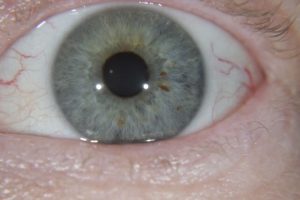Most health-conscious individuals are already aware of the presence of toxins in our environment, but despite our best efforts, we’re often limited in how effectively we can protect ourselves.
My qualifications as a naturopath and nutritionist have been able to give me the ability to unravelled some of the intricate relationship between toxins and health, particularly their profound impact on autoimmune conditions and helping others. Personally, I am affected by Autoimmune disease (Graves’ disease) and Rheumatoid arthritis and two of my family battle lupus.
Autoimmune diseases occur when the immune system mistakenly attacks healthy cells, resulting in inflammation and tissue damage.
Despite their diversity, autoimmune diseases share common features:
- Chronic inflammation
- Tissue damage
- Dysfunction of the immune system.
- Autoantibodies
- Remission and Flares
While the exact cause of autoimmune diseases remains elusive, emerging research suggests that a combination of genetic predisposition and environmental factors, such as infections by bacteria, viruses, or other pathogens can stimulate the immune system and trigger an autoimmune reaction.
For others lifestyle choices and exposure to environmental toxins, such as heavy metals, pesticides, and pollutants, can disrupt immune function and contribute to the development of autoimmune diseases.
Essentially, toxins are substances that have the potential to cause harm to our bodies. They encompass a wide range of compounds, including heavy metals, pesticides, and synthetic chemicals commonly found in household cleaners and personal care products.
While our bodies possess natural detoxification mechanisms, the abundance of toxins we encounter daily can overwhelm these processes, leading to a detrimental build-up that compromises our health.
In recent years, ground breaking scientific research has brought to light the intricate relationship between toxins and autoimmune diseases. These studies have unearthed a profound connection, demonstrating how toxins can wreak havoc on the delicate balance of our immune system, ultimately exacerbating autoimmune conditions.
Toxins have been found to disrupt immune balance by activating immune cells, such as T cells and B cells, leading to an exaggerated immune response. This hyperactive immune response can result in inflammation and tissue damage, hallmark features of autoimmune diseases. Moreover, toxins have the ability to induce a phenomenon known as molecular mimicry.
Molecular mimicry occurs when toxins or foreign substances bear structural similarities to proteins in our own tissues. As a result, the immune system becomes confused and mistakenly identifies these self-proteins as foreign invaders. This confusion triggers an autoimmune response, where the immune system launches an attack against the body’s own tissues, leading to further inflammation and tissue damage.
The impact of toxins on autoimmune diseases is far-reaching, with various sources of toxins posing risks to immune health. Environmental toxins, such as heavy metals (mercury, lead), pesticides, and industrial chemicals (PCBs, dioxins), can infiltrate our bodies through inhalation, ingestion, and skin absorption. These toxins not only disrupt immune function but also contribute to chronic inflammation, a driving force behind autoimmune diseases.
Food toxins, including pesticides, herbicides, and additives found in processed foods, have also been implicated in autoimmune disorders. These substances can contaminate our food supply and burden our bodies with harmful chemicals, further exacerbating immune dysregulation.
Household toxins present another avenue through which toxins can impact autoimmune diseases. Common household products like cleaners, detergents, and personal care items often contain chemicals like phthalates and parabens, which disrupt hormonal balance and immune function, potentially triggering or worsening autoimmune conditions.
Plastics, ubiquitous in our modern world, contain chemicals like bisphenol A (BPA) and phthalates, which can leach into food and beverages, posing a risk to endocrine health and immune function. Additionally, heavy metals found in contaminated water, seafood, and dental fillings can accumulate in the body over time, contributing to chronic inflammation and autoimmune dysfunction.
Moulds and mycotoxins, commonly found in damp indoor environments, have also been linked to autoimmune diseases. Exposure to mold can cause chronic inflammation and trigger autoimmune responses, exacerbating symptoms in individuals with autoimmune conditions.
Finally, excessive sugar consumption has emerged as a significant factor in the development and progression of autoimmune diseases. Sugar intake can impact immune cells, particularly T helper 17 (Th17) lymphocytes, altering their metabolism and promoting inflammation, thereby increasing the risk of autoimmune disorders.
In conclusion, the influence of toxins on autoimmune diseases cannot be overstated. From environmental pollutants to food additives and household chemicals, toxins permeate our daily lives and pose significant risks to immune health. By understanding the mechanisms through which toxins impact autoimmune diseases, we can take proactive steps to minimise exposure and support immune function, ultimately empowering individuals to manage their autoimmune conditions more effectively.
To mitigate the impact of toxins on autoimmune diseases, several strategies can be adopted to reduce toxin exposure and support immune health. Prioritising organic and locally sourced foods, opting for natural household products, and incorporating regular detoxification practices can help minimise toxin accumulation in the body.
By making conscious choices to reduce toxin exposure and support immune health, individuals with autoimmune diseases can take proactive steps towards managing their condition and improving overall well-being.
Natural Medicine Week Webinar
Join us for a webinar during natural medicine week Monday May 20 at 7pm Eastern Australian Time, where we delve deeper into the link between toxins and autoimmune diseases, exploring practical strategies for reducing toxin exposure and supporting immune health.













